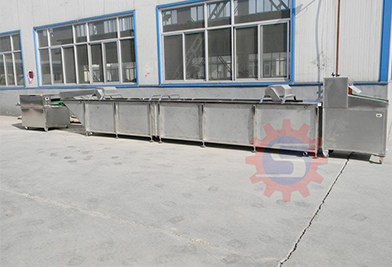Pasteurization, also known as low-temperature sterilization, cold sterilization, is a disinfection method that uses a lower temperature to kill germs and keep the flavor of nutrients in items unchanged. It is often broadly Used to define the heat treatment method that needs to kill various pathogens.
Main principle
The sterilize Machine is to heat the mixed raw materials to 68~70℃, and keep this temperature for 30min, then quickly cool to 4-5℃. Because the lethal point of general bacteria is below 68℃ and time 30min, the mixed raw materials can be treated with this method to kill the pathogenic bacteria and most of the non-pathogenic bacteria; the mixed raw materials are heated suddenly Cooling, rapid heat and cold changes can also promote the death of bacteria.
Within a certain temperature range, the lower the temperature, the slower the bacterial reproduction; the higher the temperature, the faster the reproduction (generally, the suitable temperature for microbial growth is 28°C-37°C). But if the temperature is too high, the bacteria will die. Different bacteria have different optimum growth temperatures, heat and cold tolerance. Pasteurization is actually the use of pathogens that are not very heat-resistant, and treatment with appropriate temperature and holding time to kill them all.
But after ultrasonic atomization disinfection machine (Ultrasonic atomization disinfection machine), still retain a small part of harmless or beneficial, more heat-resistant bacteria or bacterial spores, so pasteurized milk should be stored at a temperature of about 4 ℃, and It can only be stored for 3~10 days, up to 16 days.

Pasteurization
There are many types of pasteurization procedures in use today. The "low temperature and long time" (LTLT) process is a batch process that is now only used by small dairy plants to produce some cheese products. "High-Temperature Short Time" (HTST) treatment is a "flow" process, usually carried out in a plate heat exchanger, and is now widely used in the production of drinking milk. The products obtained in this way are not sterile, that is, they still contain microorganisms, and need to be refrigerated during storage and handling. "Quick pasteurization" is mainly used in the production of yogurt and dairy products. There are mainly two types of pasteurization methods commonly used internationally:
One is to heat the milk to 62~65°C and keep it for 30 minutes. Using this method, various growth-type pathogenic bacteria in milk can be killed, and the sterilization efficiency can reach 97.3%~99.9%. After disinfection, only some thermophilic bacteria, heat-resistant bacteria, and spores are left, but Most of the bacteria are lactic acid bacteria, which are not only harmless to humans but also good for health.
The second method heats the milk to 75~90°C and keeps it for 15~16 minutes. The sterilization time is shorter and the work efficiency is higher. But the basic principle of sterilization is to kill pathogenic bacteria. If the temperature is too high, there will be more nutrient loss.
Name: Gavin
Mobile: +86 181 3273 1506
Email: oath1@bdoath.com
WhatsApp: +86 181 3273 1506
Add.: No. 79, Swan Road, Gaokai District, Baoding, Hebei, China.